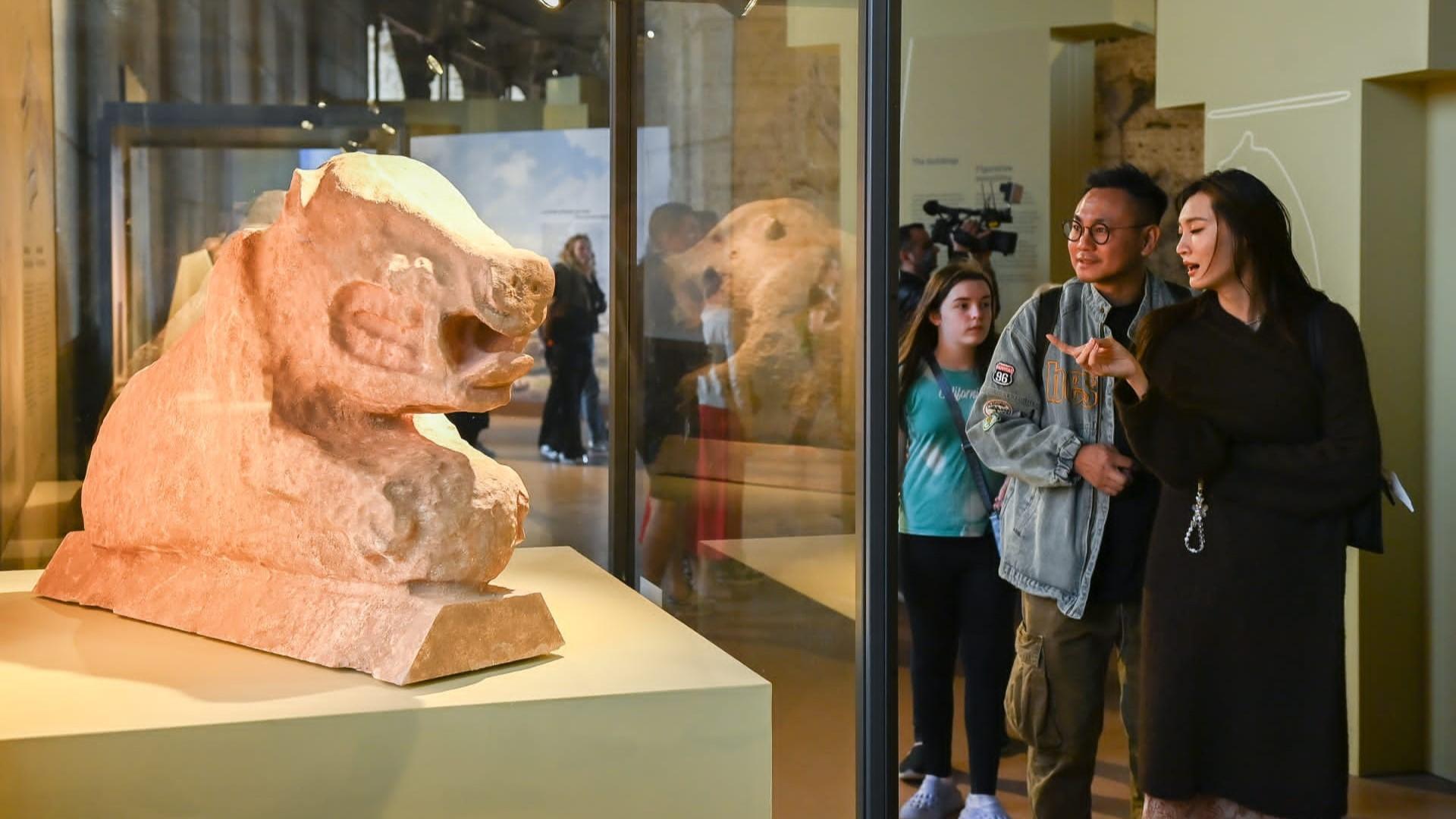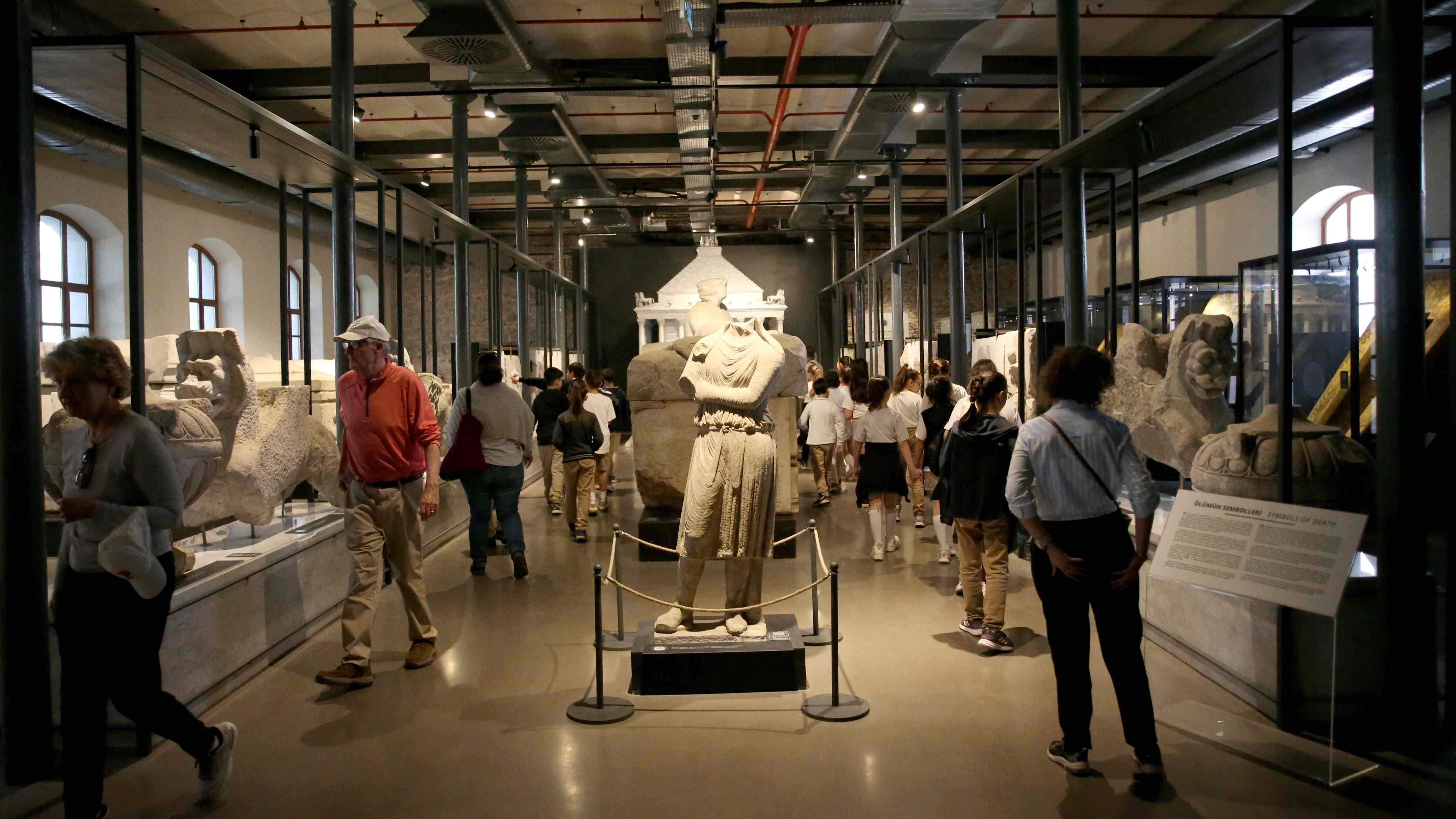Anatolian leopard DNA in World Gene Bank
ANTALYA

The Anatolian leopard, which was last seen in Türkiye in 1975, was spotted on Aug. 8, 2019, since then for the first time when it was thought to be extinct.
The DNA data obtained in the laboratory from the urine sample of the leopard that it left in front of the camera was registered to the World Gene Bank as the “Anatolian Leopard” in 2020.
The animal, named “pars” in Türkiye due to its use in Anatolian history, is one of the eight subspecies of leopards all over the world, according to scientific studies.
The research, which draws attention to the importance of the history and culture of the leopard, the most important terrestrial predatory mammal of Anatolia, is a breakthrough in terms of revealing the evidence for the existence of the Anatolian leopard.
The Anatolian leopard was captured by camera traps in the Western Mediterranean on Aug. 8, 2019, by the teams of the General Directorate of Nature Conservation and National Parks (DKMP). Later, a TÜBİTAK-supported project was initiated in cooperation with the DKMP and Isparta University of Applied Sciences (ISUBU). Within the scope of the project, 58 images of two Anatolian leopards living in the Western Mediterranean have been obtained so far.
An article has been written by ISUBU Wildlife Ecology and Management lecturer Yasin Ünal, DKMP official Hasan Uysal, ISUBU lecturers Ahmet Koca and Mevlüt Zenbilci, and WWF (World Wild Fund for Nature) Türkiye’s Mustafa Önder Ersin. The article was published in a journal on international applied ecology and environmental research.
Stating that the Anatolian leopard is recognized as a very important species both culturally and biologically in the world, Ünal said that they had published an article that scientifically proves the existence of the Anatolian leopard, which was thought to be extinct, in Anatolia.
Explaining that scientific studies have continued following this article, Ünal said that after the Anatolian leopard left urine while it was in front of the camera, a swap sample was taken from its urine by DKMP experts, and this sample was sent to Sivas Cumhuriyet University.
Ünal explained that the genetic data obtained in the laboratory were compared with other leopard species in the world and it revealed that this species was the Anatolian leopard.
“It was registered in the World Gene Bank as ‘Anatolian Leopard’ thanks to this DNA data. We continue to work on a new article about the genetic data obtained, such as where it travels and its nutrition,” he added.
It was reported in the article that the features obtained from the images of the animal were compared to the estimated anatomical features of the Anatolian leopard and revealed that the shoulder height, feather and body length, head size and head-to-body ratio and coat color were quite similar.
The data obtained from the genetic study are being prepared for future publication.
In Red List of IUCN
The article reported that the Anatolian leopard is shown as vulnerable worldwide and critically endangered on the Mediterranean scale in the World Conservation Union’s (IUCN) Red List.
The leopard was living in forests in the Central Anatolia, Mediterranean and Aegean regions until 1975, the article said, and no live recordings have been made since then, except for unconfirmed information from scientists, local residents and hunters.
According to the article, a living individual of the Anatolian leopard was photographed and recorded for the first time in history in the Western Taurus Mountains of the Mediterranean Region of Türkiye, using the camera trap method.
The article, which also points out that their numbers are rapidly decreasing due to various factors caused by human activities such as industrialization, forest fires, tourism and poaching, listed the characteristics of the Anatolian leopard.
“The Anatolian leopard is the largest leopard subspecies. An adult male can weigh 100 kilograms, with a total body length of 2.5 meters and a tail of 80 centimeters. It has glossy, tawny, rather short-haired fur and a long, shaggy tail. It has a distinctive golden color although its body color is paler than that of the subspecies in India and Africa. The length of body hair varies between 1.5 and 2 centimeters on average,” it noted.
The article provided information about the use of the Anatolian leopard in gladiator fights in the Roman period: “The Roman statesman Marcus Tullius Cicero, while he was serving as the Governor of Cilicia in 50-51 B.C., requested Anatolian leopards to be sent from the Kibyratis region, which is located between the provinces of Antalya, Burdur and Denizli in today’s Türkiye, to be used in gladiator fights. While modern researchers classify leopard species based on Cicero’s notes on the characteristics of the leopard in this period, they named those living in Anatolia ‘Tulliana’ after Cicero’s first name, Tullius.”
“Information about the Anatolian leopard dates back to ancient times. The oldest indication of the existence of leopards in Anatolia is the wall reliefs in the Leopard Temple in Çatalhöyük in the Central Anatolian province of Konya, dating back 9,000 years. Throughout history, many architectural works, sculpture finds, ceramics and coins show the importance of the Anatolian leopard in almost every period of Anatolian history,” it added.
















